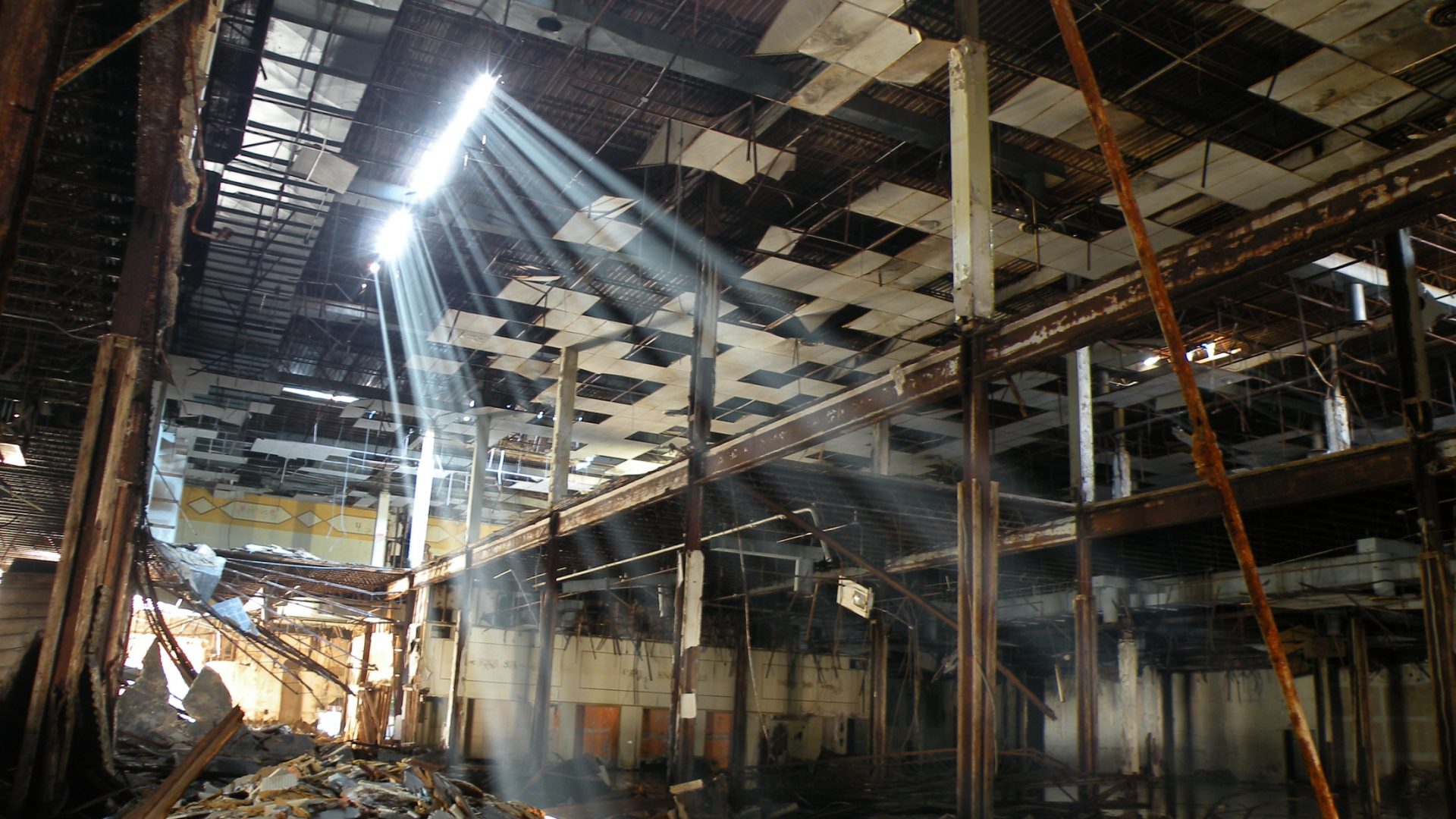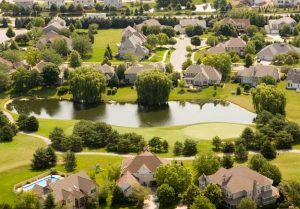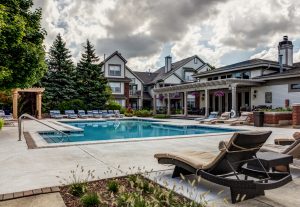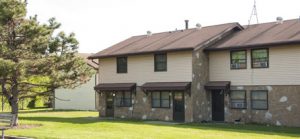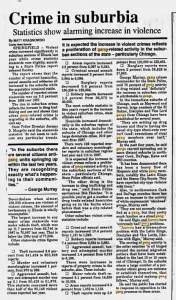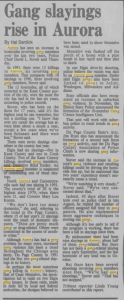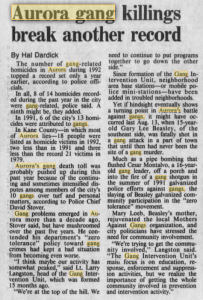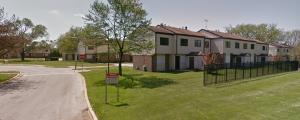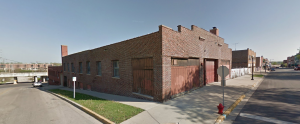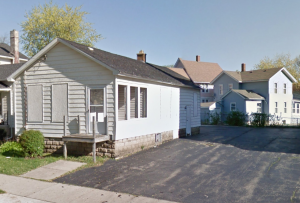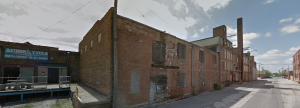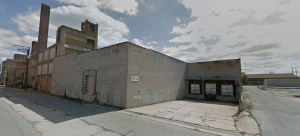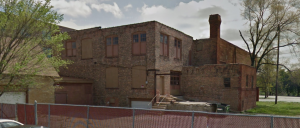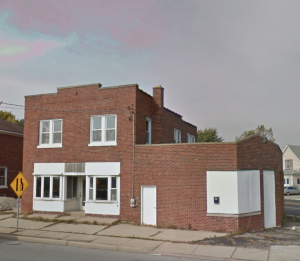| Nicknames | A-Town, City of Lights | |
|---|---|---|
| Settled by | Provide info | |
| Year infiltrated | 1981 | |
| Crime impact | Part | |
| Worst areas | Prairie Street and Lake Street, Indian Trail on the north, Galena Boulevard on the south, Farnsworth Avenue to New York Street on the east, Fox River on the west |
|
| Suburban projects | Indian Trail Apartments, Eastwood Apartments, South Wind Apartments; Jericho Circle (demolished in 2012) |
There has been an ongoing dispute over the years since the 1980s about how rough of a neighborhood Aurora is. If you Google search “How bad is Aurora?” or “What parts of Aurora are bad?” you will come across forums like City Data where people are bickering back and forth about the extremity of the crime and gang activity in this community. I myself have seen people freaking out saying how the town is swarming with gang activity and there are several boarded up homes and shootings daily, when realistically they probably drove through and saw one boarded up house and heard about 2 murders the whole year and make a general assumption that it is like “Cabrini Green” which I have seen one person compare the Aurora area on City Data compare to the notorious and disastrous public housing project in Chicago, ha! I could barely contain myself from laughter! I also see many Aurora natives severely downplay the city’s problems by writing their testimony to give the vibe that there is just some riff raff here and there, no big deal, some gang activity, no big deal, some parts that are a little tough, and no big deal. Well, the real truth is the issues in Aurora are in between what people say, always remember the saying there is one side of the story, the other side of the story, then there is the truth. The truth is somewhere in the middle of everyone’s exaggerated stories whether they are trying to sell you on how petty the crime is in the neighborhood or whether they are trying to persuade their audience that Aurora is comparable to the hardest neighborhoods of Chicago.
There is no doubt that there has been a hardcore gang banging element in Aurora since the 1980s with some of the meanest and most violent hardened gangsters that will make you shiver just from looking at their hardened mug shots with goatees, shaven bald heads and tear drop tattoos. On the other hand; Aurora is filled with high class and expensive upper middle class homes that are up to three stories high and were built as mansions in the days of old, or perhaps these suburban dwellers take up residence in the many large upper middle class palaces that were built no earlier than 1987 as they are lined in rows in swanky subdivisions such as Stone Bridge (pictured below), Brentwood Estates or Oakhurst North (pictured below), where families live in 4+ bedroom, 3+ bathroom homes as their children attend the finest of schools such as Waubonsie High School, the husbands work with well over $100,000 a year salaries, and the wives stay home all day and gossip with neighbors while raising the youngest children. The only worries and fears are getting their daughters to cheer leading practice on time or making sure those plane tickets to Aruba for the family vacation are well booked. In the meantime, in other parts of Aurora the lower income class family is cashing in their section 8 vouchers looking for any home that will accept them, struggling to keep their children away from gangs and violence while arguing with public aid to make sure they have enough Link benefits to make it through the month while putting in major hours at a grueling job or perhaps activity seeking work. Ah yes, Aurora is a melting pot of different income classes of people with some that are the haves and some that are the have nots, while others are nestled right in between. From the premium outlet malls near interstate 88, to the upper middle class and working class dwelling of west Aurora, to the bustling downtown shopping and splendor near the fox river to the trouble east side all the way to the swanky and borderline wealthy far east side near Fox Valley Mall, Aurora has it all.
It is important to understand where the gang and crime element is located which has not changed throughout the last several decades, it is also important to understand how the gang banging and crime came to be in this city which is my goal in this section to take a trip through time and show what Chicago based gangs ever dwelled in Aurora and where the troubled areas are.
Aurora was first settled in the year 1834 when Samuel and Joseph McCarty settled these lands from the state of New York (hence where New York Street in the city got its name) as they came here on a conquest to find a river to build a saw mill and this is when they stumbled into the Fox Valley area and found the Fox River, of course they were not here first to settle this area. The first settlers were Pottawatomie Indians, more specifically the tribe led by Chief Waubonsie that voluntarily signed off on the land in 1833. The McCarthy brothers arrived soon after on April 1, 1834 and settled right at the site of where the current downtown Aurora currently flourishes. The new settlement was named McCarty’s Mill, and by 1835 settlers began moving into the area along the river squatting then eventually purchasing land from Joseph McCarty for a mere $5 for a plat of land and thus began a new society in McCarty’s Mill as people found the area ideal because a stagecoach route was convenient for travel to Chicago.
The McCarty brothers had settled both sides of the Fox River but in 1837 they sold the western part of their settlement to Theodore and Zaphna Lake. The McCarty brothers renamed their settlement “East Aurora” while the Lakes renamed the other side of the river “West Aurora” and opened their own competing saw mills which caused the two families to become bitter rivals.
In the year 1849 The Chicago, Burlington & Quincy Railroad built a rail line through Aurora that caused a boom in both settlement and industry, it also brought unity to East and West Aurora after Burlington decided Aurora was ideal for major repair and railcar construction shops and also the largest stone roundhouse in the country, the Burlington Railroad then became the largest employer in the whole Kane county area bringing thousands of jobs and creating a massive wave of European immigration of English, Irish, Scandinavian, Luxembourg, German, French and Italian decent. This thriving in industry caused East and West Aurora to combine municipalities and become the City of Aurora in 1857.
After the buildup of the Burlington railroad industry and the massive influx of immigration the city developed a downtown area that was lined with many shops, night time spots and theaters.
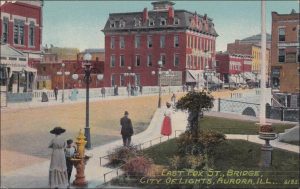
In the year 1881 the city was lit up with electrical street lights which was a marvel back in those days because very few U.S. cities had street lights and Aurora was one of the first, hence, where the “City of Lights” nickname comes from that was coined in 1881 then made official in 1908.
Aurora became a major industrial powerhouse by the 20th century as the population continued to grow exponentially thanks to the roaring railroad industry. New subdivisions were platted and more and more immigration continued, even Mexican immigration first began in the 1910s decade; therefore, Aurora has always had a long standing Mexican community on the city’s east side. The railroad industry driven powerhouse would continue well after World War II.
Gangbanging in Aurora started at least since 1957 or sooner. Aurora homemade street gangs were appearing in the newspaper as causing some pretty severe issues. One gang in particular was led by a 12 year old boy that took his gang members on a high speed chase in a stolen car. The boy then tried to run through a roadblock and had a shootout with police until he was gunned down, all this happened in 1957.
In the early 1960s Aurora began to experience higher crime rates as the city’s population continued to grow, most of the crime was centered near the downtown area in the east side of the city. The east side was home to the lower income residents of the city; therefore, more of the impoverished criminal element came from this area of the city. The newspapers of the 1960s soon brought in reports from the city of some rapes, robberies, thefts, burglaries and even some murders from the streets directly east of the Fox River or directly south of downtown on the west side of the river. Teenage street gangs became quite popular on the east side beginning in the early 1960s and became increasingly larger as the decade moved on, which contributed to a lot of the crime in the east Aurora area.
Aurora gangs would sometimes frequent annual Sandwich Fair Grounds events in the nearby town of Sandwich and greaser brawls would take place disturbing the events. Some of the gangs were Mexican like the “Spanish Skulls” while others were white greasers. Big gang brawls would happen at these events and police needed to take action.
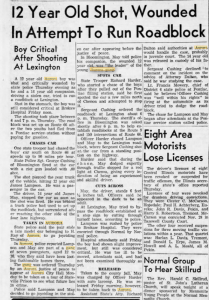
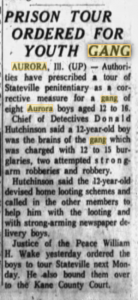


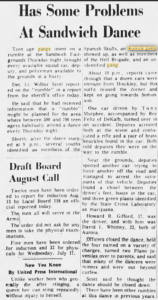
In the later 1960s Aurora experienced racial strife as blacks attempted to move into the community and gain equality, but they were met with harsh racism. This brought the NAACP to Aurora to attempt to rally blacks to protest this. Whites responded with violence in September of 1967 when groups of white middle aged men and teens flocked into the suburb heavily armed and soon fights and shootings ensued. Aurora police arrested multiple individuals as the war was going on in Aurora and Maywood, mostly in Aurora.
The early 1970s brought about a further increase in crime as heroin and cocaine entered this community and was being pushed on the Aurora streets that were put together by a Cuban exile drug ring that had become the largest distributor across the country.

On September 20, 1970 Hector Jordan (pictured), who was a federal narcotics agent and the first Latino police officer in Aurora was beaten to death by seven drug dealers on the streets of Aurora (Chicago Tribune page 19, October 19, 1970). This beating showed how the crime in Aurora was something not to be taken lightly.
In the year 1970 Aurora got in on the building of public housing complexes in the city to take in low income residents. The planning was for four parcels of land to be reserved for public housing that were all strategically placed on the east side and one of them in a forgotten and somewhat isolated area of the city. The public housing projects were: Eastwood Apartments at the intersection of Grove and Northeast, Indian Trail Apartments at Indian Trail Road and High Street, South Wind Apartments at 4th and Melrose and the notorious Westwood Apartments also known as Jericho Circle at Jericho Circle and Jericho Road.
The first project to be built was Westwood Apartments in the year 1970 by Hartford Midwest Development Company. The project was to have 2 to 6 bedroom apartments within 145 units, with a 2-story low rise layout. The projects were strategically placed at the intersection of Jericho Road and Jericho Circle which was cut off from any nearby subdivisions and also a good distance away from commercial and retail businesses making it nearly impossible for residents to walk to any employers, it also would affect emergency response times due to being further away from the rest of the Aurora population. Although it is not officially documented that these projects were built to be isolated from the rest of the community, there has been much scandal over the years that this was strategically done, and there has been many scandals about public housing projects in Chicago, as I highlighted in my Projects section on this site how public housing in Chicago most of the time ended up being built in places where the public housing community was cut off from the rest of the city, this seems to clearly be the case with the Jericho projects. If the projects were built in a more affluent area on the west side of Aurora, residents of west Aurora likely would have had a fit back in 1970 and residents around the projects likely would have moved out as property values would have decreased; therefore the planning called for the Jericho projects to be isolated from everyone else.
Eastwood Apartments, Indian Trail Apartments and South Wind Apartments were also strategically built public housing projects, although not built in isolation like the Jericho projects these three other projects were built in the troubled (Although not as troubled at that point in time) and lower income east side of Aurora.
In the year 1974, the Burlington roundhouse with all the railroad shops closed down which caused massive economic devastation in the city of Aurora as thousands were left without jobs which definitely had a major impact on the local economy, especially the many workers that lived on the east side. As a result of the closing of the roundhouse many east siders began to move out of the neighborhood in the second half of the 1970s decade. The property values plummeted on the east side due to the fact that the homes were older and also due to the fact that there was not as much commercial industry in the area making Aurora less attractive for working class families. Cheaper homes became ideal for lower income classes and section 8 voucher holders and that was the type of income class that moved into those older homes on the east side.
In the late 1970s more commercial businesses closed their doors causing more economic devastation to Aurora’s East side and also to the public housing dwellers that solely relied on those jobs.
Aurora created a plan in the late 1970s to develop the Far East side of town that directly bordered the town of Naperville which would end up housing the highest income class of Aurora residents. The houses and townhouses that began construction were elegant and large in size, and sometimes within gated communities. The new homes were built near the Fox Valley Mall that had opened its doors in 1975. Now, when entering Aurora from Naperville, the city now had a new image as an elegant upper middle class to upper class suburb. The dividing line between the east side and far east side mostly runs from south to north Farnsworth Ave up to New York Street then there is a big gap between Eastern Ave and County Line Road that separates the two, then once north of the railroad tracks, Farnsworth becomes the divider once again between the east side and far east side. The northern most boundary of the east side is Indian Trail Road, anything north of there is working class, middle class and of the upper income classes that has low crime and low gang activity. The divider between the east side and west side is the Fox River or Broadway Street, that also is the cut off between a higher crime and lower income part of Aurora and a lower crime and higher income part of the city. The only area on the west side that has been known to have elevated crime elements is right near the intersection of Lake Street and Prairie Avenue which is just below the down town area.
The buildup of Fox Valley Mall and the housing developments on the Far East side drained the relevance of the downtown area and soon many retail businesses closed their doors and the downtown area became a gloomy and depressing place with many vacant businesses. Not only did vacancy of downtown businesses cause the Fox River area to be less attractive it also caused further unemployment in the retail industry for Aurora’s east side.
In the late 1970s as the local economy started to crumble and property values plummeted in the east side, lower income Mexican immigrants and Mexican and Puerto Rican Chicagoans found the east side to be an attractive area to find cheaper housing. Within the new Latino population came the first Chicago gang members from the north side of Chicago.
The gangs that were created on the streets of Aurora died out significantly by the mid-1970s and this meant there would be a prime opportunity for Chicago based street gangs to set up territory in the suburb. This is when high ranking Latin King gang member Angel “Doc” Luciano took up residence in the suburb sometime in the mid-1970s as he moved from the Lathrop projects located in the North Center neighborhood on Chicago’s north side. Luciano had at least two sons that were in street gangs, one of them is Michael Luciano who is a Latin King and was only about 4 years old when he moved to Aurora with his father. The other was a member of the allied Insane Deuces gang nicknamed “Rican.” Shortly after their arrival on the east side of Aurora the Lucianos began bringing in Latin King gang members from the city to move into the area and operate in the suburb. In the year 1976 Rican had spread his influence into the suburb as well as members of the Insane Deuces began to arrive, Both organizations were undetected by Aurora police for five or more years.
By the year 1980, a small group of pre-teenage youths joined up with the Insane Deuces and another group joined up with the Latin Kings street gang, the youths were originally members of an Aurora based gang known as the Latin Crusaders. Latin Kings and Insane Deuces were both allied with the People Nation alliance so no gang wars would ensue when both gangs first set up in about 1980, especially since there were family ties between the two gangs; instead they fought with local gangs for territory. The worst crimes Aurora gang members committed was theft and vandalism in the years 1981 and 1982 and Aurora police did not consider gangs a big threat at all and even laughed about their existence, but by 1983 that would all begin to change as the gang members grew older and more violent, especially once the Folk Nation street gangs arrived like the Black Gangster Disciples and Maniac Latin Disciples. The Black Gangster Disciples and Conservative Vice Lords mainly set up territory in the four housing projects and mainly recruited black youths but were wide open to recruiting Latino and white youths. Insane Deuces and Latin Kings were mainly for Latino youths but were wide open to taking black and white youths as well.
In the year 1984 Aurora suffered its first gang related homicide and now Aurora police could no longer laugh about the gangs like they did in the January 10th 1984 article of the Chicago Tribune where they reported gang activity to not be very severe and called the young Latin Kings and Insane Deuces in the neighborhood just wannabe kids. Now these gangs had guns and were not afraid to pull the trigger, as shown by this homicide and the kids born and raised on the streets of Aurora were now proving to be fit to run alongside the gang bangers of Chicago that were their leaders. Aurora police took immediate action after the shooting death but there was already a major street gang underworld that had a pipeline leading straight to the leadership based in Chicago that had gone undetected for the past few years, the Aurora police had their work cut out for them and now their jobs would soon become a lot more dangerous and Aurora’s east side was about to become more dangerous as well.

In the mid-1980s the gangs continued to grow as membership soared into the hundreds. By 1985 Aurora gang members wanted to show that they were loud and proud when they started hanging out in the neighboring suburb of Naperville at the downtown Naperville Riverwalk (pictured). The downtown area and most of Naperville is upper middle class to upper class and has had virtually no legitimate gang activity over the years, but in 1985 gangs made their first appearance at the peaceful part of town as they came there to pick up on middle class girls from Naperville and to start trouble with the males in the park. One Naperville teen got so bold as to flash a rival gang sign at Aurora gang members which caused him to be brutally beaten by three Aurora gang members. Thanks to the appearance of gang members in the Riverwalk in 1985 now many upper middle class Naperville teens wanted to join Chicago based street gangs and so it happened as Aurora gang influence spread into the quite upper class suburb of Naperville.



Beginning in 1987, the crack cocaine epidemic swept through the streets of the east side and also hit the public housing projects hard. Gangs had been in the city for a awhile and now swelled into perhaps more than a thousand members, the Aurora police already had more than a few hundred “hard core” gang members on file and were trying their hardest to crack down on the violent gang activity, but 1987 saw more violence and shootings than they could handle as the bodies began to stack up. The gang members were killing over drug territory all thanks to the craze over crack cocaine, the guns were blazing and now east Aurora was becoming just as violent as many Chicago neighborhoods.
In 1988 mothers in the community were tired of this escalating violence so they brought in Mothers Against Gangs that worked to keep their children out of gangs and to keep the community working together to stop gang activity dead in its tracks, over the years the group would have some success but the violence would still continue.
The housing projects were in the worst condition as far as shootings and gang violence were concerned, beginning in 1987 gang members in the Eastwood projects began selling more drugs and shooting at each other especially at the intersection of Grove Street and Northeast Street where gang members would pop the hoods of their cars and sell drugs under the hoods, fronting like as if they were really into auto repair. The South wind projects and Indian Trail projects began experiencing heightened gang activity as gang members heavily peddled drugs. The worst of all was at the Jericho Circle projects were the violence and drug activity became uncontrollable accompanied by the fact that the Aurora Housing Authority began to neglect making renovations and repairs to the buildings.
By the year 1990, the Aurora police had 500 to 600 documented gang members on file, but there was an overall estimate of about 1,000 active gang members in the community by then and it was continuously growing.
The 1990s would bring the worst gang violence in Aurora history as murders happened on a regular basis. Gang members also began to openly defy police; a prime example was in April of 1992 when gang members in the Eastwood projects at Grove and Northeast Street hurled a Molotov cocktail into a police trailer that was doing surveillance of drug activity at that intersection, the bombing cost $2,500 worth of damage. The gang members had been taunting police at this intersection they called “The Hole” for a while but on that April night they showed their power by throwing that Molotov (Chicago Tribune April 23, 1992).
The mid-1990s saw many violent gang wars as this was probably the peak of Aurora gang violence in the city’s history. There were now 8 documented street gangs in the suburb. The gangs that existed by then were Ambrose, Insane Deuces, Latin Kings, Maniac Latin Disciples, Satan Disciples, Gangster Disciples, Vice Lords, Latin Counts and an Aurora based gang known as the Latin Homeboys. The arrival of the Imperial Insane Vice Lords in 1994 was a major addition to the Aurora gang population.
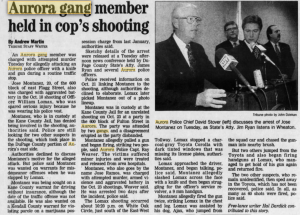
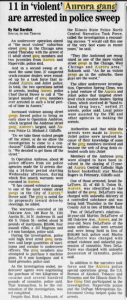
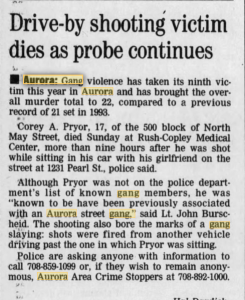
In the year 1997, Aurora police cracked down hard on the street gangs and imposed a zero tolerance policy for gang activity; this was very effective in the housing projects where gang activity and violent crime were out of control. Although there were major improvements in law enforcement in the late 1990s gang violence was still a major issue in the suburb and would continue to present day.
In the year 2007 both Angel and Michael Luciano along with several other Latin King gang members were taken down in a massive sting that involved the reopening and solving of the cold case file murders including the death of a fellow Latin King in 1989 and the shooting death of Albert “Psycho” Gonzalez on Halloween night 1990 (People vs Luciano, 2013). This put a massive dent in the Latin Kings organization which is the most powerful gang in Aurora that became so powerful the Lucianos even cut most of their ties to Latin Kings from Chicago a long time ago.
The public housing projects were in bad shape, especially the Jericho Circle projects that continued to be plagued with heightened gang violence and drug activity. The projects ended up with several vacant buildings where drug dealers and drug addicts staked their claim. The living conditions in these projects were unsustainable as they stood decaying with little to no renovations. Eventually Jericho Circle was slated for demolition and torn down in 2012. Eastwood Projects, Indian Trail projects and South Wind projects were renovated.
Although there is a lot of negativity in the east side community of Aurora, this is also a hub of Mexican and Puerto Rican culture and most people are law abiding residents. This area is not like the worst ghettos of Chicago, although troubled it is still a livable place for most people and there is a strong sense of community; however, there is high crime in this area that is still comparable to some of the more violent neighborhoods of Chicago.
Photos of vacant properties
